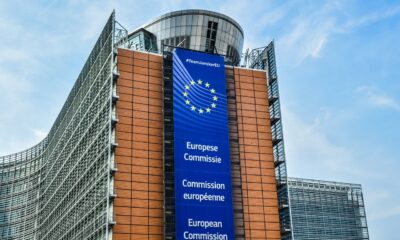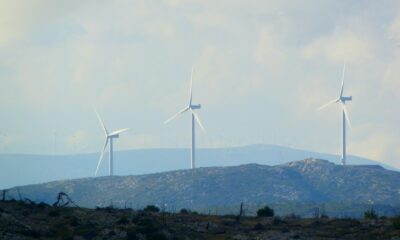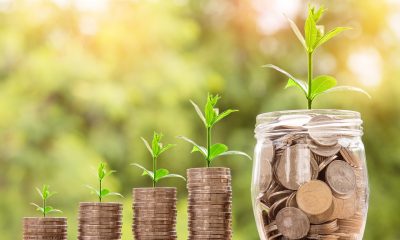Impact Investing
ESG Investing Is About Getting It Right Over the Long Term Without Losing Profitability
There are many aspects that condition the selection criteria in ESG investment, such as the environmental or social dimensions, without losing sight of the impact that the initiative is intended to generate. Hence, the president of BNP Paribas in Spain, Cecilia Boned, has invited to approach the choice of projects from a global perspective, at the IV Mapfre Forum on Sustainable Finance

The world of business and finance met at the IV Mapfre Forum on Sustainable Finance, where experts in the field addressed the current situation in investment with ESG criteria. They discussed the challenges and opportunities of environmental, social and good governance aspects in the financial environment and how the latter attracts investors and generates a social dividend.
Experts in the world of ESG (environmental, social and governance) investment met at the 4th Mapfre Forum on Sustainable Finance. In recent years, the environmental approach has been the most developed due to the existence of a more advanced regulatory framework and the ability to more accurately quantify the impact of sustainable initiatives. However, the S for ESG also plays a role. The deputy general commercial director of Mapfre Iberia, Javier Oliveros, advocated “putting people at the center of sustainable investments”.
This approach was also echoed by Santander Asset Management CEO Samantha Ricciardi, who acknowledged that environmental had been in a predominant position until the arrival of the pandemic. “Since 2020 the S for social is present in 15% of the bonds issued and almost represent a total of 400,000 million euros in investment,” said Ricciardi.
If you want to find more about ESG investing and read the most important business news of the day, download for free our companion app Born2Invest.
Pre-retirement or precariousness: the employment dead end for the over-50s
Regulation has been one of the main counterparts for the social aspect to have had the same trajectory as projects or products focused on the energy transition or the reduction of carbon emissions, since in the environmental aspect there is a taxonomy, although it is differentiated according to geographies. “In the social area, we are assessing the real impact on people, an aspect that is much more difficult to quantify.
A common and clear language must be established to measure the company’s contribution and the social dividend,” said Mar de Andrés, Director of Social and Volunteer Work at Fundación Repsol. “In Europe, much progress has been made in environmental regulation, while in the rest of the world, where they pollute the most, they have not done so to the same extent. This reduces our competitiveness and will also harm us socially,” warned Mapfre’s Investment General Manager, José Luis Jiménez Guajardo-Fajardo.
On the road to improving the world without losing sight of social sustainability is the prospect of profitability. 2022 was a year marked by the war in Ukraine, which continues to this day. And that affected the price of raw materials that gave higher returns to more conventional energy companies. “In 2022 the ESG-focused investor may have seen a drop in returns but we have to remain focused on ESG despite geopolitical instabilities,” explained Santander AM head Ricciardi, who stressed that the institutional client remains the most focused on ESG investment.
Experts at the colloquium agreed that you can’t manage sustainable projects or create sustainable investment products just because it’s a trend. “It has to be intrinsic in the business DNA,” explained Jiménez. “We cannot think in the short term. We have to look for structural criteria. In the end, it is important to surround yourself with a serious ESG team because it will ensure profitability in the long term. And that is the right thing to do,” said Jiménez.
“We have to focus on social intentionality, on what we want to solve, and measure the impact of the initiative taken. Additionality allows us to see it from the perspective of what would have happened if we did not carry out that initiative,” said Mar de Andrés, for example, in order to calculate the added value of the initiative.
More time to digest the ESG regulatory tsunami
In the last five years we have experienced a veritable regulatory tsunami with regard to sustainable finance, which has affected the way in which risks are measured and annual results are reported, as well as the way in which investment portfolios integrate sustainable assets. This topic was the focus of the second round table of the 4th Mapfre Sustainable Finance Observatory.
Juan Carlos Delrieu, Director of Strategy and Sustainability of the Spanish Banking Association (AEB), defended the need to give institutions a margin of time to allow them to process the tremendous regulatory barrage regarding sustainable finance. He has claimed “a digestion space where market agents can digest everything that has come and is coming, to process it and use it more effectively”.
“Considering that regulation should be an enabling framework”, possibly the issue “is getting out of hand”. In his opinion, “regulation should ask itself if they really […] are useful frameworks for what they are intended for”. Delrieu referred to the taxonomy, “which is extraordinarily complex”; to the European Disclosure Regulation for funds, which “is still not an adequate framework to give clarity to the investor, much less to the retailer”, he regretted.
De Miguel (CNMV): “The regulation is complex and has inconsistencies”
Faced with a financial sector that is asking for more time, the regulator wants to strengthen supervision. As David de Miguel, deputy director of Regulation and Sustainability at the CNMV, admitted, “the regulation is complex and has inconsistencies, and has meant an effort for everyone, including supervisors”. But he added an optimistic point: “Since 2018 we have achieved many things. There has been a clear flow of investments towards sustainable finance, which was what was intended, and we have greatly boosted transparency, both in issuers, entities and investors.” At the same time, “we are educating the latter,” added De Miguel.
On the positive side of the rules, Delrieu admitted that the regulatory framework, despite everything, is working. “In recent years the market has responded with growth in the issuance of green bonds and loans, close to 60% on average per year, both in Spain and at the European level. And this is due to regulation,” he said.
We cannot forget that “this is the first time that sustainable finance has been regulated, in Europe and I would say in the world, it is a new phenomenon; until now, everything to do with sustainable finance was self-regulation”, said Úrsula García, partner at finReg360, “This is a challenge, and regulators are not necessarily experts in sustainability either”. Sustainability has many different prisms, she explained, including the measurement of risk and the impact or positive contribution.
Important role of the company in social dividends
There are many aspects that condition the selection criteria in ESG investment, such as the environmental or social dimensions, without losing sight of the impact that the initiative is intended to generate. Hence, the president of BNP Paribas in Spain, Cecilia Boned, has invited to approach the choice of projects from a global perspective.
“You have to include everything. It’s not enough just to say that you do something ESG. It only makes sense if you approach it from a global perspective,” Boned summarized. In the case of BNP Paribas, they have been more than ten years without financing projects linked to coal and they already finance more projects focused on green energy than on conventional energy as a whole for an amount of more than 28 billion euros, according to the head of the entity.
“However, it is true that the environmental issue is the most talked about because it is easier to communicate and quantify,” Boned acknowledged.
But the social aspect of ESG also has a place in the financial approach of companies in recent years. The vice-president of Mapfre and CEO of Mapfre Iberia, José Manuel Inchausti, gave an example of one of the plans implemented since the foundation of the insurer to generate a social dividend. Through its volunteer program, of which 5,000 employees are part, initiatives are carried out that leave their mark on society. “There are a thousand ways to give back to society what has been obtained in the company. They are measures with a small impact but with a background as a whole,” said the Mapfre manager.
Inchausti (Mapfre): “There are a thousand ways to give back to society”
In addition, there is a system of bias imposed by the same clients and investors who demand projects or products that have some social impact, beyond a strictly economic return. “We evaluate whether a company has an ESG plan. We contribute directly but we also emphasize that there is a sustainable profile through an investment, product and underwriting policy,” commented Inchausti.
“There will come a time when an ESG license will be needed to be able to operate. Environmental and social sustainability criteria cannot be approached in terms of costs because in the end it is the client/investor who demands an ESG approach,” ventured Cecilia Boned, who stressed the need for a more collective approach to sustainability criteria in the business world.
Del Valle (Unespa) vindicates the solvency of the sector
“We are in all aspects of daily life. More than 13 million policyholders and participants entrust us with their retirement savings,” said Mirenchu del Valle, president of Unespa, at the closing of the IV Mapfre Observatory on Sustainable Finance. In this sense, “we manage 250,000 million euros for our clients,” she explained.
“We have products, such as life annuities or reverse mortgages, which make it possible to transform illiquid assets, such as real estate, into a source of recurring income,” stressed the president of the insurance companies’ association, who emphasized the importance of the ESG acronym: “The day-to-day work of the insurance sector is, by definition, social,” she remarked during her closing speech.
Del Valle explained that many of the insured are senior citizens: “To be exact, 2.3 million policyholders are over 60 years old. Health insurance channels a constant flow of patients to private healthcare, thereby assuming part of the Spanish healthcare burden and, in doing so, contributing to the public healthcare system providing better service,” he said. She also alluded to the issue of housing: “Two out of every three families own the property where they live, according to the Bank of Spain, and insurers have a key role to play in protecting this real estate asset,” she pointed out.
The number one of the employers’ association also took the opportunity to highlight the solvency of the sector: “We have to endorse to the State that we are in a position to meet the commitments we have with our clients; this is what we call solvency requirements. Well, Spanish insurance companies have assets that allow us to meet 2.41 times the amounts established by the solvency regulations. I have been encouraged to talk to you about this subject because it is important for you to remember this: our capacity to act as a safety net for society rests on the possibility of paying whatever is necessary where a mishap has occurred or where a service has been compromised”, stressed Del Valle.
He also pointed out that the insurance company has 82,500 on-site service points, compared to, for example, the 2,400 post offices or the 22,200 pharmacies in Spain. “We are particularly proud, not only of the fact that we have many points of service, but also that our service network is adequately distributed. In fact, we have a higher relative presence in the so-called ’empty Spain’,” he pointed out.
__
(Featured image by geralt via Pixabay)
DISCLAIMER: This article was written by a third party contributor and does not reflect the opinion of Born2Invest, its management, staff or its associates. Please review our disclaimer for more information.
This article may include forward-looking statements. These forward-looking statements generally are identified by the words “believe,” “project,” “estimate,” “become,” “plan,” “will,” and similar expressions. These forward-looking statements involve known and unknown risks as well as uncertainties, including those discussed in the following cautionary statements and elsewhere in this article and on this site. Although the Company may believe that its expectations are based on reasonable assumptions, the actual results that the Company may achieve may differ materially from any forward-looking statements, which reflect the opinions of the management of the Company only as of the date hereof. Additionally, please make sure to read these important disclosures.
First published in elEconomista.es. A third-party contributor translated and adapted the article from the original. In case of discrepancy, the original will prevail.
Although we made reasonable efforts to provide accurate translations, some parts may be incorrect. Born2Invest assumes no responsibility for errors, omissions or ambiguities in the translations provided on this website. Any person or entity relying on translated content does so at their own risk. Born2Invest is not responsible for losses caused by such reliance on the accuracy or reliability of translated information. If you wish to report an error or inaccuracy in the translation, we encourage you to contact us.

-

 Africa1 week ago
Africa1 week agoMorocco’s Wheat Dependency Persists Despite Improved Harvest
-

 Biotech4 days ago
Biotech4 days agoEcnoglutide Shows Promise as Next-Generation Obesity Treatment
-

 Markets2 weeks ago
Markets2 weeks agoCocoa Prices Drop Amid Speculative Selling and West African Supply Concerns
-

 Business1 day ago
Business1 day agoThe TopRanked.io Weekly Digest: What’s Hot in Affiliate Marketing [PureVPN Affiliates Review]
























